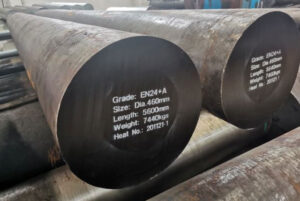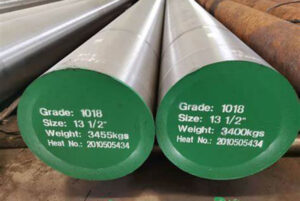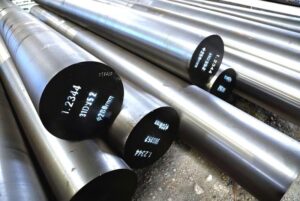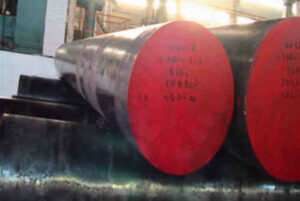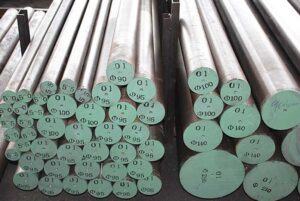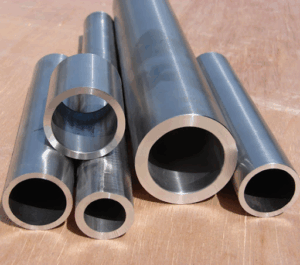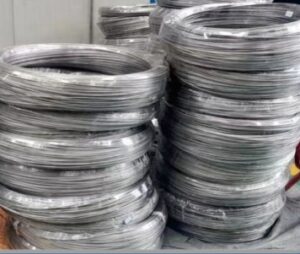When it comes to stainless steels, AISI 410 is a name you’ll often hear in discussions about durability, versatility, and cost-effectiveness. If you’re new to the world of metallurgy or just curious about what makes this particular stainless steel stand out, you’re in the right place. In this article, we’ll dive deep into the world of AISI 410 Stainless Steel, exploring its chemical composition, mechanical properties, heat treatment, applications, and much more. We’ll make it engaging, detailed, and easy to follow, so buckle up!
Overview of AISI 410 Stainless Steel
AISI 410 stainless steel is a type of martensitic stainless steel, which means it has a crystalline structure that’s formed by heat treatment. This gives it unique properties such as high strength, hardness, and resistance to wear and corrosion. It’s a popular choice in industries ranging from automotive to aerospace, thanks to its balance of good mechanical properties and reasonable cost.
Key Details at a Glance
- Type: Martensitic Stainless Steel
- Corrosion Resistance: Moderate
- Strength: High
- Hardness: High
- Weldability: Moderate
- Applications: Cutlery, valves, pump shafts, petrochemical equipment
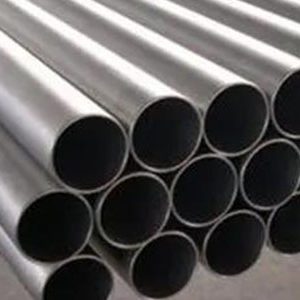
Chemical Composition of AISI 410 Stainless Steel
Understanding the chemical composition of AISI 410 stainless steel is crucial as it directly impacts its properties and performance. Here’s a detailed breakdown:
| Element | Percentage (%) |
|---|---|
| Carbon (C) | 0.08 – 0.15 |
| Chromium (Cr) | 11.5 – 13.5 |
| Manganese (Mn) | 1.00 max |
| Silicon (Si) | 1.00 max |
| Phosphorus (P) | 0.040 max |
| Sulfur (S) | 0.030 max |
| Nickel (Ni) | 0.75 max |
The high chromium content provides AISI 410 with good resistance to corrosion, while the carbon content helps in achieving high hardness and strength.
Mechanical Properties of AISI 410 Stainless Steel
The mechanical properties of AISI 410 stainless steel are what make it so desirable in many applications. Here’s a detailed table showcasing these properties:
| Property | Value |
|---|---|
| Tensile Strength | 480 – 620 MPa |
| Yield Strength | 275 MPa (minimum) |
| Elongation at Break | 20% |
| Hardness (Brinell) | 200 (max) |
| Hardness (Rockwell C) | 20 – 24 |
These values highlight the material’s ability to withstand high stress and its excellent performance under mechanical strain.
Heat Treatment of AISI 410 Stainless Steel
Heat treatment processes are essential for achieving desired properties in AISI 410 stainless steel. Here’s a detailed overview of the heat treatment parameters:
| Process | Temperature Range (°C) | Details |
|---|---|---|
| Annealing | 815 – 900 | Slow cooling to prevent warping |
| Hardening | 980 – 1035 | Followed by oil or air quenching |
| Tempering | 150 – 370 | Adjusts hardness and toughness |
Proper heat treatment can significantly enhance the mechanical properties and performance of AISI 410 stainless steel.
Applications of AISI 410 Stainless Steel
AISI 410 stainless steel is used in a variety of industries due to its versatile properties. Here’s a table detailing some of its common applications:
| Application | Details |
|---|---|
| Cutlery | High hardness and moderate corrosion resistance |
| Valves | Strength and wear resistance |
| Pump Shafts | Durability and corrosion resistance |
| Petrochemical Equipment | High strength and moderate corrosion resistance |
| Fasteners | High strength and durability |
| Automotive Components | Wear resistance and strength |
These applications leverage the material’s balance of strength, hardness, and corrosion resistance.

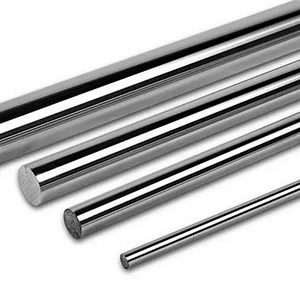
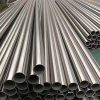
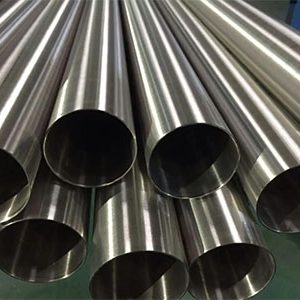
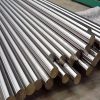
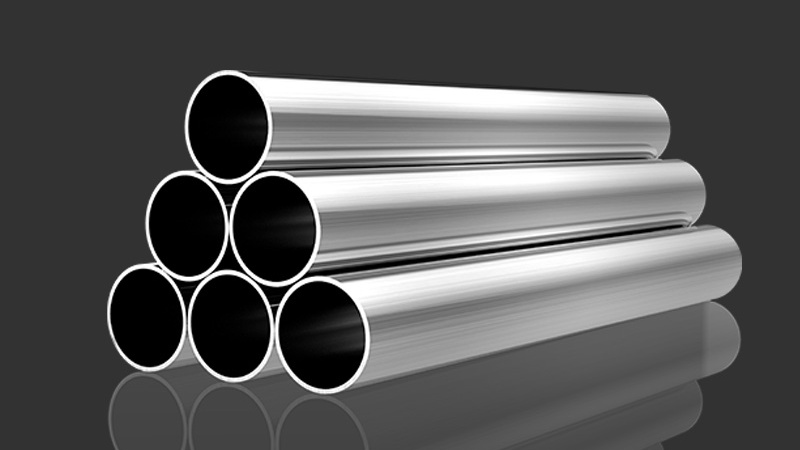
Suppliers and Pricing of AISI 410 Stainless Steel
When sourcing AISI 410 stainless steel, it’s essential to know where to find reliable suppliers and understand the pricing structure. Here’s a table with some supplier details and typical pricing:
| Supplier | Country | Price Range (per kg) |
|---|---|---|
| Acerinox | Spain | $3.50 – $4.50 |
| Outokumpu | Finland | $3.60 – $4.60 |
| Jindal Stainless | India | $3.30 – $4.20 |
| Allegheny Technologies | USA | $3.70 – $4.70 |
| Sandvik Materials | Sweden | $3.80 – $4.80 |
Prices can vary based on factors like quantity, quality, and market conditions.
Advantages and Disadvantages of AISI 410 Stainless Steel
Understanding the pros and cons of AISI 410 stainless steel helps in making informed decisions. Here’s a comparative table outlining the advantages and disadvantages:
| Aspect | Advantages | Disadvantages |
|---|---|---|
| Strength | High strength compared to many other stainless steels | Can be brittle if not properly heat-treated |
| Hardness | Excellent hardness making it suitable for cutting tools | Hardness can lead to challenges in machining |
| Corrosion Resistance | Moderate corrosion resistance suitable for various environments | Not as corrosion-resistant as austenitic stainless steels |
| Cost | Generally more affordable compared to other high-performance stainless steels | May require more maintenance in corrosive environments |
| Weldability | Moderate weldability with pre-heating and post-weld heat treatment required | Can be tricky to weld due to the risk of cracking |
These factors help in evaluating whether AISI 410 is the right material for specific applications.

FAQs
To wrap things up, let’s address some frequently asked questions about AISI 410 stainless steel.
| Question | Answer |
|---|---|
| What is AISI 410 stainless steel used for? | It’s used in applications like cutlery, valves, pump shafts, and petrochemical equipment. |
| How does AISI 410 compare to other stainless steels? | It offers a good balance of strength, hardness, and cost, but has moderate corrosion resistance. |
| Can AISI 410 be welded? | Yes, but it requires pre-heating and post-weld heat treatment to avoid cracking. |
| What is the heat treatment process for AISI 410? | It involves annealing, hardening, and tempering to achieve desired properties. |
| Is AISI 410 suitable for high-temperature applications? | It can withstand moderate temperatures but isn’t ideal for extremely high-temperature environments. |
By addressing these common questions, we hope to provide a clearer understanding of AISI 410 stainless steel.
Conclusion
AISI 410 stainless steel is a versatile and cost-effective material that offers a good balance of strength, hardness, and moderate corrosion resistance. Its wide range of applications, from cutlery to industrial components, highlights its adaptability and value. While it has its challenges, particularly in welding and corrosion resistance compared to other stainless steels, its benefits often outweigh these drawbacks for many applications. Whether you’re in the automotive, aerospace, or petrochemical industry, understanding the properties and potential of AISI 410 can help you make informed decisions for your projects.
So, next time you come across a component or tool made from AISI 410 stainless steel, you’ll know exactly why this material is chosen. Its combination of affordability, strength, and durability makes it a go-to option for many engineers and manufacturers.

